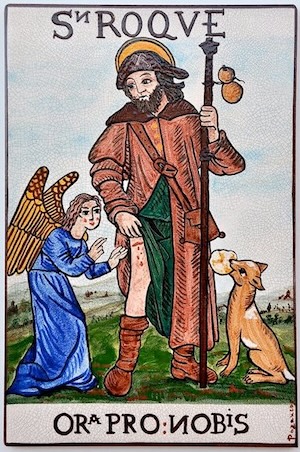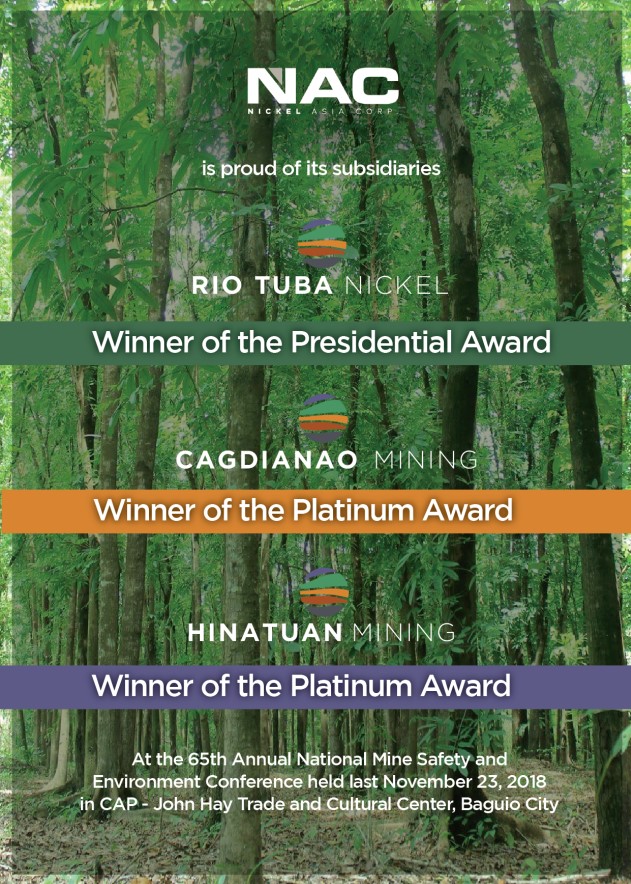The rite of August
 By Rex Catubig
By Rex Catubig
Mention San Roque during the monsoon season, and it conjures fear and triggers the flare up of goosebumps. A dam, sacrilegiously named after the saint, and notorious for unleashing water that turns into horrendous floodwaters as it cascades down the lowlands, is to blame for its ill repute—making it a trigger for shivers and synonymous with being a harbinger of catastrophe as opposed to its religious honorific as a beneficent healer.
In my childhood, San Roque was the revered patron saint of my Barrio Calmay, and I grew up swearing by his efficacy in healing. He was the beneficent spiritual doctor we called upon when all else failed, aside from the “arbolario”, to deliver us from our malady. He is portrayed with a dog as companion, holding up the hem of his garment, showing a gaping wound on his thigh, symbolic of affliction.
For nine consecutive days in rainy August, ending on his feast day on the 16th, the cottagey wood “ermita” or small chapel, with clay ground for its floor, would be the center of our religious fervor. The chapel bell would clang at around three in the afternoon to announce that the prayers were about to start, summoning the residents to participate in the novena led by a group of elderly prayer women called “managpoon“, who wore “sapey”, the native garment, which had been retrieved from the “kaban” or wooden chest, and reeked of moldy scent that permeated the place.
The repeated clanging would rouse us children from our mandatory afternoon nap, “painawa” or “lirep“. We would spring up like stray cats from the “datal”, bamboo slatted floor, we slept on, and sans “suekos” or wooden clogs, scurried fast to follow the religious call—whipping up a splatter of murky rain puddle as we sloshed through the muddy dirt road.
But the excitement was not really prompted by holy devotion, rather by the anticipated wordly joy of getting handfuls of “galletas“– those coin-sized white sugar cookies, which were doled out in purse-sized brown bags made out of torn newspaper pages. They were the reward for our attendance at the “parasal”, and for screaming at the top of our lungs, the refrain of supplication following the novena:
“Ilaban mo kami pa, San Roque,
Ed talbay sakit’a onsabi!”

As the song beseeching deliverance concluded, we would jostle one another with outstretched cupped hands to the altar, to claim our share of the manna from heaven, packing our little mouth with as many pieces as we could fill it with.
As rain started to pelt down the roof of the chapel, it was the signal for us to rush back to our houses, feeling blessed, with raindrops spattering on our faces. Although the gospel truth that really hastened our rapturous run was that the crumbly powdery cookies had parched our throat and made us thirsty, “apaet”. The caked cookies in our mouth needed to be dissolved. So, we would climb up the bamboo stairs to the “banggera” to get a glass of cool water from the “buyog” or earthen jar. It was the closest to heavenly salvation.
This scenario would recur for nine consecutive afternoons, culminating with a “libot” or procession along the dirt road–going north to ”Kailokoan”, then doing a u-turn, westward towards “Sagor”, and finally ending back at the “Basketbolan” where the chapel stood.
Then, just like that, the feast was over. The monsoon would intensify and dump more rainfall. But there was nothing scary about it, unlike now where it causes alarm. Rather, it was a joyful occasion for us to frolic in the heavy downpour, drenching our heads and frail bodies in the waterfalls gushing from bamboo gutters of thatched-roofed houses, and playing with paper boats we sent out to sail along the rivulets.
Folks believe that bathing in the rain is cleansing. It washes away sickness and reinvigorates spiritual health. “Bendisyon itan”, the elderly would claim and confirm.
Whatever it does, it is a wondrous purification ritual–whose lasting spiritual spell appeases our soul-weary selves, as we re-echo that plaintive supplication.
“Ilaban mo kami pa San Roque.
Ed talbay sakit’a onsabi!”

August is gone in no time, but its transcendent spiritual charm remains in every random raindrop that, in another time, another clime, carries the song of hopeful plea for deliverance.
Then, as September comes along, we brace ourselves for more storms of remembrances, humming along the wind of the mellowing season, yet keeping alert for a possible sudden thunderstorm.
“Times, they are a changing”.







